Physics
Sign up for our newsletter
We summarize the week's scientific breakthroughs every Thursday.
-
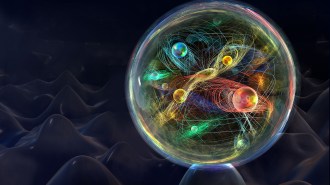 Particle Physics
Particle PhysicsHow physicists are probing the Higgs boson 10 years after its discovery
The famous particle may point to cracks in the standard model and new physics beyond.
-
 Physics
PhysicsPhysicists may have finally spotted elusive clusters of four neutrons
Long-sought clumps of four neutrons called tetraneutrons last less than a billionth of a trillionth of a second, an experiment suggests.
-
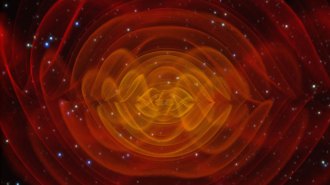 Astronomy
AstronomyGravitational wave ‘radar’ could help map the invisible universe
Gravity ripples scattering off warped spacetime near massive objects might help astronomers peer inside stars and find globs of dark matter.
By Asa Stahl -
 Physics
PhysicsHow fast a row of dominoes topples depends on friction
Computer simulations reveal that two types of friction are important in determining how quickly dominoes collapse.
-
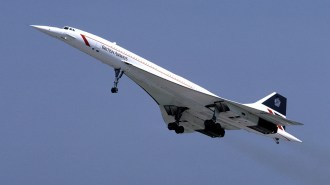 Physics
PhysicsWhy even small sonic booms are more annoying in cities
Quieter sonic booms from next-generation planes could still be annoying in cities thanks to narrow streets and tall buildings, simulations suggest.
-
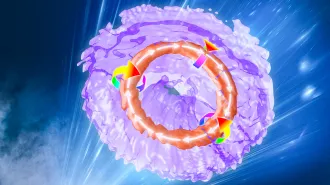 Physics
PhysicsScientists created ‘smoke rings’ of light
A swirling doughnut of light shows that vortex rings aren’t just for fluids anymore.
-
 Quantum Physics
Quantum PhysicsQuantum physics exponentially improves some types of machine learning
It wasn’t entirely clear if quantum computers could improve machine learning in practice, but new experiments and theoretical proofs show that it can.
-
 Particle Physics
Particle PhysicsHow neutrinos could ensure a submarine’s nuclear fuel isn’t weaponized
Nuclear submarines could be monitored with the help of neutrinos to ensure that the fuel isn’t diverted to nuclear weapons programs
-
 Physics
PhysicsHere’s why pipe organs seem to violate a rule of sound
Why reedless wind instruments’ fundamental tones are lower than expected is an 160-year-old mystery. Physicists have now solved it.
By Bas den Hond -
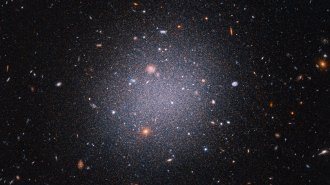 Physics
PhysicsA galactic smashup might explain galaxies without dark matter
Scientists are debating whether a trail of galaxies reveals the origins of two weird dark matter–free galaxies.
-
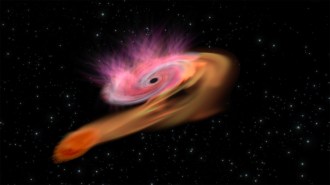 Particle Physics
Particle PhysicsHigh-energy neutrinos may come from black holes ripping apart stars
Where extremely energetic neutrinos originate from is a mystery. A new study supports the idea that “tidal disruption events” are one source.
-
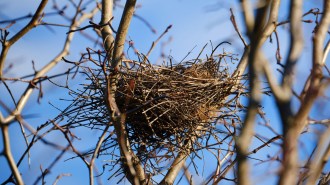 Physics
PhysicsExperiments hint at why bird nests are so sturdy
A bird’s nest is a special version of a granular material. Lab experiments and computer simulations explain its quirky behavior.